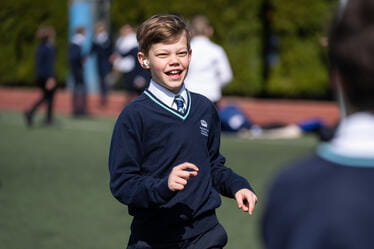As you may know, we are taking part in Nord Anglia’ metacognition project. For this project, students learn more about themselves as learners. More specifically, students are taught Thinking Routines to help them develop the IB Learner Attributes. This half term we are focusing on being Caring and are using the ‘Circle of Viewpoints’ Thinking Routine as support, and we are being ‘Risk-Takers’, using ‘Chalk-Talk’ for assistance. I asked Ms Pietruch to write a testimonial on the impact of Thinking Routines in her classroom. I was so moved by what she wrote and her dedication to her students that I felt compelled to share it with you all.
Testimonial on the Impact of Thinking Routines in the Classroom
In my recent teaching practice, I have had the privilege of incorporating thinking routines into my lessons, and the results have been truly transformative for both my students and me as an educator. Specifically, I employed the Main-Side-Hidden routine with my Year 11 and Year 9 classes to explore idiomatic expressions and the Chalk Talk routine with my Year 8 English Bridging class to delve into irony and sarcasm through the lens of Animal Farm.
The Main-Side-Hidden routine encouraged students to analyse idiomatic expressions beyond their surface meanings. By creating a table to unpack the main, side, and hidden meanings of idioms, my Year 11 students discovered layers of nuance and cultural context they had never considered before. The activity sparked rich, thoughtful discussions and led to some truly creative interpretations. Seeing my students engage so deeply with the language was incredibly rewarding.
Similarly, the Chalk Talk routine brought a unique and dynamic energy to my Year 8 classroom. By working silently in groups of four to reflect on prompts about irony and sarcasm, students used written communication to share and build upon each other’s ideas. The four-step process—think, share, read, and respond—promoted introspection, focus, and collaboration. Many students commented on how the absence of spoken words fostered a calm yet stimulating environment for brainstorming and creativity. Their insights into Animal Farm demonstrated a deeper understanding of literary techniques and thematic nuances.
Overall, the feedback from students was overwhelmingly positive. They appreciated the innovative lesson structures and felt genuinely engaged and challenged. Personally, I was inspired by their enthusiasm and the originality of their responses. These thinking routines not only enhanced their learning experience but also reaffirmed my commitment to designing thought-provoking and innovative lessons. I look forward to integrating more of these strategies into my teaching repertoire.
This is just one ‘moment of magic’ from the secondary school, and I hope to share many more in the coming editions.
Sarah Żakowicz
Assistant Head - Academic





